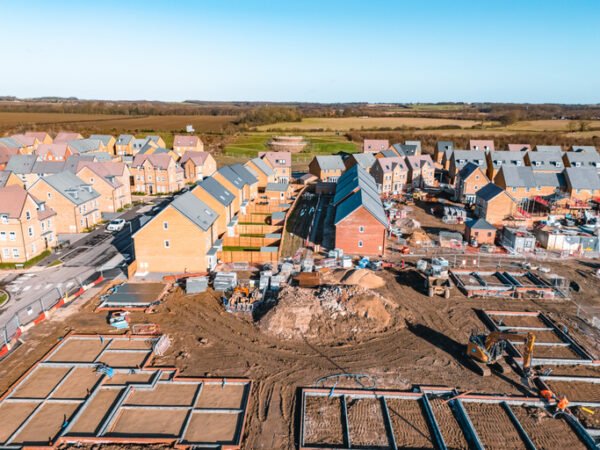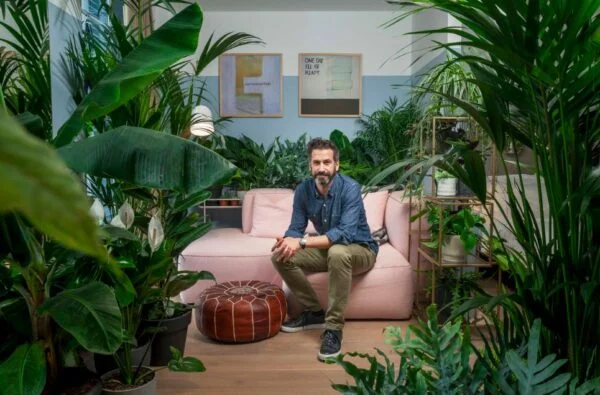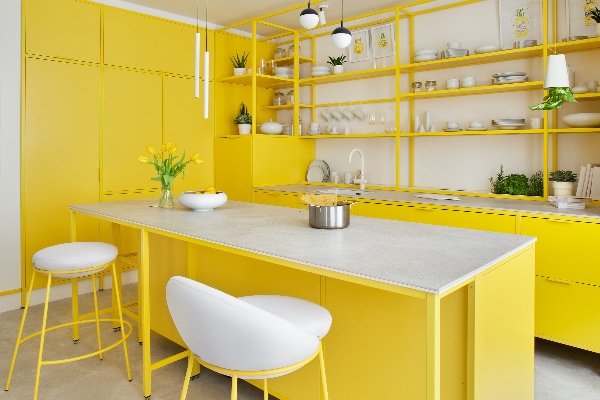Many of us can’t afford to get on the property ladder: according to Shelter, house prices are now over 10 times the average salary. We’re not building enough affordable housing and the homes we do have can cost a small fortune to live in – energy prices keep going up and, with around 30% of the UK’s total power consumption used in domestic properties, so do our bills.
In short, the UK housing market is fraught with challenges that affect us all. ‘As a mum of three, I know how important it is to manage a family budget – after all, we all want our money to go further and get more for less’, says Christine Hynes, CEO of Climate Energy Homes.
If we want commercially viable homes that are fit for purpose and flexible enough to meet both future needs and current requirements, we will need to rethink how we build them.
Homes of the future
 Climate Energy Homes is rising to the challenge: determined to become a catalyst for change in the way we build homes in the UK, the company has worked with partners in Sweden and Austria and joined forces with developers, landowners, contractors, local authorities, registered providers and private landlords all over the UK. The goal is to lead a revolution that ensures the homes we build for the future are stylish, energy efficient and affordable.
Climate Energy Homes is rising to the challenge: determined to become a catalyst for change in the way we build homes in the UK, the company has worked with partners in Sweden and Austria and joined forces with developers, landowners, contractors, local authorities, registered providers and private landlords all over the UK. The goal is to lead a revolution that ensures the homes we build for the future are stylish, energy efficient and affordable.
‘We believe that everyone has the right to live in a well-designed, well-built and well-insulated healthy lifestyle home that doesn’t cost the Earth to heat and power – a home that actually reduces the cost of everyday living’, Christine explains. As a solution, she has designed two BOPAS-accredited ecoTECH Build Systems – Fabric First and Passivhaus – that provide warmer and more efficient buildings that benefit individuals, communities, the environment and the economy – and that cost less than 14p per day to heat.
A magic bullet?
‘Our highly engineered ecoTECH Build Systems have changed the way we can deliver housing in the UK. They’re made in factories to a higher quality and structural tolerance, providing the energy-efficient, healthy homes we need’, Christine says. ‘Commercially, these new methods are known as ‘MMC’.’ These ‘Modern Methods of Construction’ use highly engineered processes – very similar to those used in the car manufacturing industry – to deliver energy-efficient homes and buildings that cost up to 90% less to heat.
‘The designs are highly flexible so homes can be built to meet all types of existing local vernacular, such as the height and architectural style of surrounding buildings’, Christine says. Costs are reduced because construction takes place in a factory-controlled environment, where panels and hybrid homes are manufactured and rigorously checked for quality before they’re sent to the site. The sheer speed of the build also helps keep costs down: a house can be built in just one day.
Sustainable communities
Climate Energy Homes’ ecoTECH Fabric First and Passivhaus Build Systems were created in response to the challenges facing the UK’s housing market and construction industry. Everything that goes into each of the integrated build systems, which can be used for residential or commercial properties, is selected according to the lifetime use of each building.
‘We are committed to creating sustainable communities, supporting local supply chains, using the local labour force and collaborating with local colleges to provide ongoing apprenticeships and mentoring programmes’, Christine told us.
Climate Energy Homes has already built a development of 51 homes in Rainham, London, using the ecoTECH Build System. ‘Passive Close’ – believed to be the UK’s largest all-affordable Passivhaus scheme – was built on behalf of Circle Housing and Old Ford Housing Association, and was specifically designed to achieve Passivhaus certification and Level 4 of the Code for Sustainable Homes.
The Living Laboratory
Climate Energy Homes has also been involved in a project to create a ‘Living Laboratory’ for the Institute for Sustainability. The unique facility on the London Sustainable Industries Park (London SIP) – the land for which was provided by the Greater London Authority – looks and behaves like a residential property and, following its launch this spring, can be used to test how consumers interact with innovations in energy and water
efficiency.
Climate Energy Homes supplied and built the modular three-storey home for the Living Laboratory. Appliance manufacturers, designers and utilities and technology companies will use information gathered from tests in the house to design and develop future control systems that meet everyday user requirements.
As global demand for resources increases, it’s becoming even more important to find alternative ways to understand and reduce consumption. While technology plays an important role, if occupants aren’t engaged with it or struggle to use it – or if the information it provides isn’t accurate and reliable – potential savings will not be realised.
‘We know that no matter how successfully technologies work in isolation, people’s behaviour and engagement is critical to real and sustained efficiencies and environmental improvement’, said Ian Short, the Institute for Sustainability’s chief executive. ‘Facilities like the Living Laboratory provide a rare opportunity to co-create, design and test new products in a real home setting.’
A wider, EU-funded project (‘SusLabNWE’) will establish a network of Living Laboratories for similar research; pilots are taking place in Germany, the Netherlands and Sweden as well as in the UK.
 Play Video about This Rock Might Just Save The World
Play Video about This Rock Might Just Save The World Play Video about Play 2 hours of rock
Play Video about Play 2 hours of rock Play Video about Play 2 hours of brook
Play Video about Play 2 hours of brook Play Video about Play 2 hours of sheep
Play Video about Play 2 hours of sheep


















 Climate Energy Homes is rising to the challenge: determined to become a catalyst for change in the way we build homes in the UK, the company has worked with partners in Sweden and Austria and joined forces with developers, landowners, contractors, local authorities, registered providers and private landlords all over the UK. The goal is to lead a revolution that ensures the homes we build for the future are stylish, energy efficient and affordable.
Climate Energy Homes is rising to the challenge: determined to become a catalyst for change in the way we build homes in the UK, the company has worked with partners in Sweden and Austria and joined forces with developers, landowners, contractors, local authorities, registered providers and private landlords all over the UK. The goal is to lead a revolution that ensures the homes we build for the future are stylish, energy efficient and affordable.
























